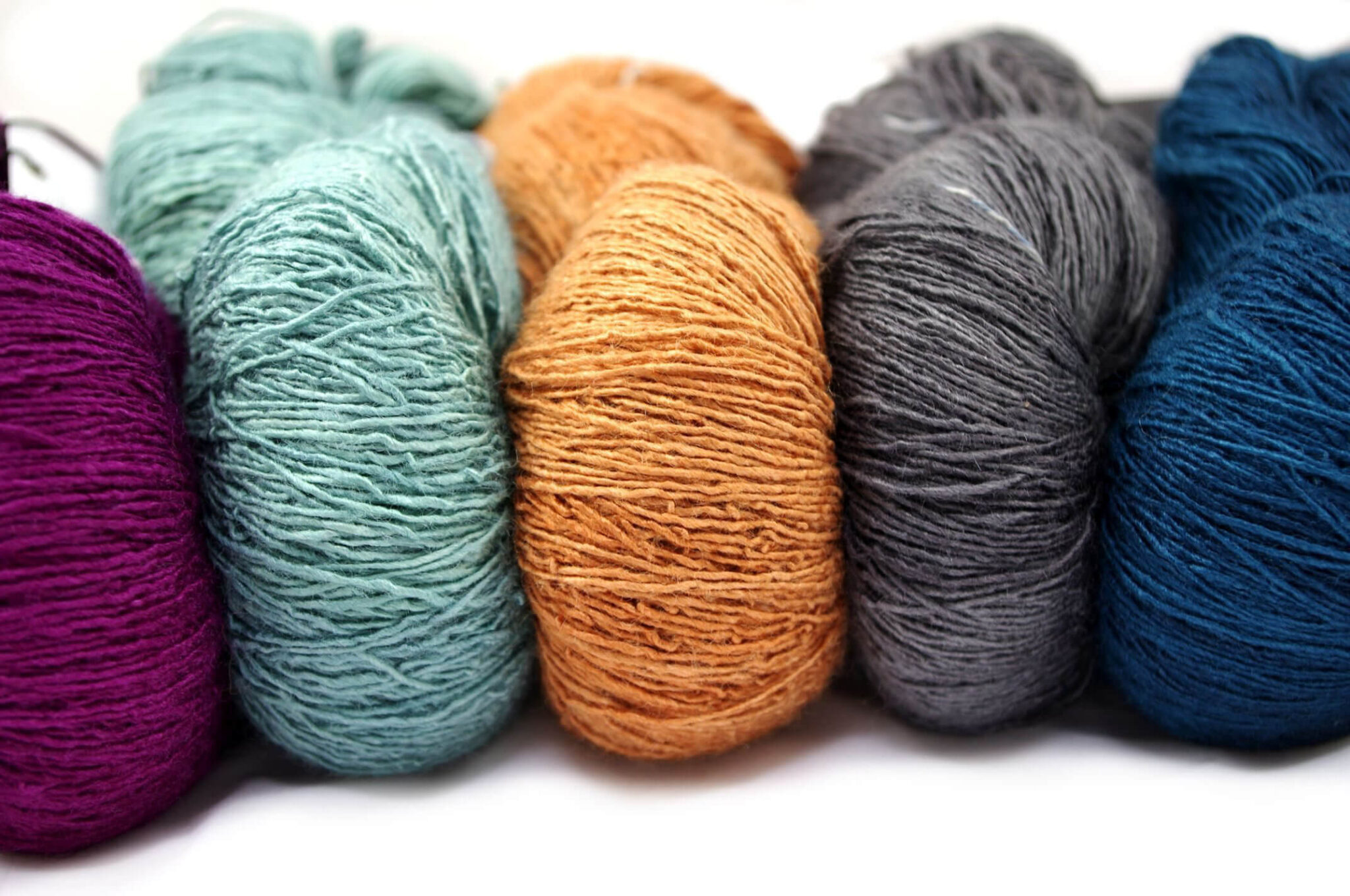How to Identify Genuine Silk Yarn from Fake Ones

Yarn is one of the essential elements in the textile industry, widely used in the production of fabrics and various other products from ancient times to the present. Yarns are made from different raw materials and, depending on their composition, offer unique features and applications. The role of yarn in fabric production is so significant that the final product’s quality largely depends on the type of yarn used. High-quality yarns can lead to products that are more durable, longer-lasting, and visually appealing.
In modern industry, yarns are generally divided into two main categories: natural and synthetic. Natural yarns are made from organic materials like cotton, wool, and silk, while synthetic yarns are derived from chemicals and polymers. Among these, silk yarn holds a special position due to its unique properties.
Silk is one of the most valuable and luxurious yarns available, known for its softness, natural sheen, and high durability. However, its high price has historically led to efforts to produce fake and cheaper alternatives. Fake yarns, often made from synthetic materials like polyester, can easily mislead buyers due to their similar appearance to genuine silk. Thus, knowing how to distinguish genuine silk yarn from counterfeit ones is essential.
Raeis Industrial Group explains how to identify genuine silk yarn to help buyers avoid purchasing low-quality and counterfeit products and make the best choices for their production needs.
Silk Yarn: Definition and Features
Silk is one of the oldest natural fibers, dating back thousands of years. It is obtained from the cocoons of silkworms and has long been recognized as one of the most luxurious and high-quality yarns. China is known as the birthplace of silk production, with the Silk Road spreading this valuable commodity across the globe.
Silk yarn is distinguished by its unique features, such as its natural sheen, which results from the triangular structure of silk fibers that reflect light in a special way, giving it a glossy and beautiful appearance. Moreover, silk’s exceptional softness and smoothness provide a pleasant feel against the skin, making it one of the most sought-after materials for luxury clothing.
Silk yarn is also highly flexible and resistant to tearing, making it durable for long-term use. Additionally, due to its natural properties, silk can regulate body temperature, keeping the body cool in summer and warm in winter.
These features make silk one of the most popular yarns for producing luxury products such as evening dresses, high-end scarves, decorative fabrics, and even certain hygiene products. However, the high price of genuine silk has resulted in the market being flooded with fake alternatives that mimic its appearance but lack the quality and properties of natural silk.
The Importance of Identifying Genuine Silk Yarn
In a market where counterfeit products are rapidly increasing, identifying genuine silk yarn has become more critical than ever. Buyers and manufacturers using fake yarns not only face financial losses but also see a decline in the quality of their final products. This issue is especially significant in the textile and clothing industries, where product quality is vital to customer satisfaction.
Since fake silk yarns are typically made from synthetic materials like polyester or nylon, the final products lack the features of natural silk. This not only reduces the lifespan of the products but also negatively impacts the customer’s experience. Economically, buying and selling counterfeit silk yarns can result in significant losses.
Thus, awareness of how to identify genuine silk yarn is vital for everyone involved in the production and distribution chain. Raeis Industrial Group provides a detailed explanation of these methods below.
Key Differences Between Genuine and Fake Silk Yarn
Identifying the differences between genuine and fake silk yarn can be challenging, but understanding the unique characteristics of each can make the process easier. Here are some key differences:
Natural Sheen
Genuine silk yarn has a special, natural luster that changes depending on the angle of light due to its physical structure. In contrast, fake yarns often have a uniform, artificial shine, indicating the use of synthetic materials.
Touch and Feel
When touched, genuine silk yarn feels exceptionally soft and smooth, a texture that fake yarns cannot replicate. Synthetic yarns like polyester usually feel rougher and coarser.
Weight
Natural silk is very lightweight, whereas fake yarns tend to be heavier and less flexible.
Traditional Methods for Identifying Genuine Silk Yarn
Before advanced technologies were available, people used traditional methods to distinguish silk yarn. Despite their simplicity, these methods remain effective and practical for buyers. Some of these methods include:
Burn Test
Genuine silk burns quickly and emits a smell similar to burning hair.
Water Test
When soaked in water, silk yarn remains soft and flexible.
Touch Test
As mentioned earlier, genuine silk has a soft and smooth texture that fake yarns lack.
Advanced Physical and Chemical Tests for Identifying Genuine Silk Yarn
With advancements in technology, more precise scientific methods for identifying silk yarn have emerged. These methods use tools and techniques to accurately differentiate genuine silk from counterfeit yarns. Key tests include:
Microscopic Examination
Using electron microscopes, the structure of silk yarn can be examined in detail. Genuine silk fibers have smooth and transparent surfaces, whereas synthetic fibers often appear rough and unnatural.
Spectroscopy Test
This test uses spectrometry devices to analyze the light spectrum of the yarn. Genuine silk produces a specific spectrum due to its unique chemical composition, differing from synthetic yarns.
Acid Dissolution Test
Silk dissolves in certain acids, such as acetic acid. In this test, the yarn is placed in an acid solution. Genuine silk dissolves gradually, whereas synthetic yarns like polyester are resistant and do not dissolve.
Moisture Absorption Test
Due to its unique fibrous structure, natural silk has high moisture absorption capacity. This feature can be used as an important indicator to identify genuine silk.
Elasticity Test
Genuine silk has high elasticity and can return to its original shape without tearing when stretched.
Conclusion
Identifying genuine silk yarn in today’s world, with the prevalence of counterfeit products, is an essential skill. Natural silk, with its distinctive features like sheen, softness, high durability, and temperature-regulating ability, remains one of the most valuable and popular yarns in the textile industry. However, counterfeit silk yarns continue to emerge, misleading buyers with their similar appearance and feel.
This article by Raeis Industrial Group comprehensively reviewed methods for distinguishing genuine silk from counterfeit yarns. Traditional methods like touch tests and advanced scientific techniques such as spectroscopy and acid dissolution can help buyers and manufacturers avoid low-quality yarns. Awareness of these methods not only benefits buyers economically but also ensures the quality of the final products.
Ultimately, given the importance of silk in the clothing and decoration industries, paying attention to the authenticity of yarn and sourcing it from reputable suppliers is crucial. It is recommended to always purchase from trusted sellers and, if possible, use the mentioned tests to verify authenticity. By taking these steps, you can ensure that the final product is made with the highest quality and genuine materials, leaving customers satisfied with the results.

